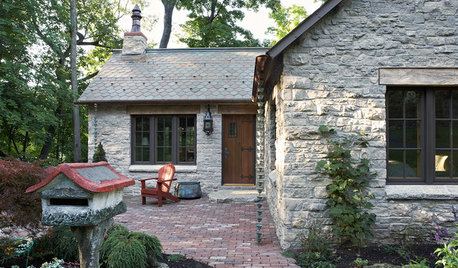Custom Budding
ehann
15 years ago
Featured Answer
Sort by:Oldest
Comments (27)
jerijen
15 years agoehann
15 years agoRelated Discussions
some vintage H.T.s on rootstock, now available
Comments (4)Good news that those golden oldies are available on rootstock; bad news that Hortico is the source. *** I had the same feeling because, long-term, Hortico's multiflora rootstock has never been good for us here. If I lived where there was more heat, I would sure love to grow Soleil d'Or. Even though it is budded, and even in the Heritage's greater heat, it's not a lovely plant. BUT THE BLOOMS! Oh, lordy, the blooms. Jeri...See Moreburlington rose nursery california
Comments (21)Yes, her roses are healthiest among the 4 nurseries I ordered. Which means no thrips, no virus, no mites, no disease. She's a detailed person and manages her nursery well. If a rose doesn't look right, she throws it away as a precaution. Her price is the cheapest for band-size. She has a large selection of 160 mini-roses at $7.50 each, and 389 big roses at $10.95 to choose from. Compare that to the $20 rose infected with Rose Rosette Disease that I bought at local Home Depot last year. California, where Burlington Nursery is, doesn't have Rose Rosette Disease, and there's strict agricultural laws governing shipping of roses: soil-less potting mix so insects can't be transmitted....See MoreCustom budding
Comments (10)Susan, go ahead and try the own-root roses you are interested in (Tom Brown or whatever others) and see how they do under YOUR care in YOUR garden. Some will require extra attention and nutrition, others will be a bit more maintenance free. The example in my garden is 'Lyon Rose'. It sat in a prominent spot in my HT garden for four years, never getting taller than two feet and barely flowering. It's rare, so I lived with it. Last year, I kept it free of weeds, fed it with Osmacote and made sure it was well watered, and the blasted thing grew to three-feet tall and flowered almost all season, with new canes and lots of great growth. This taught me that sometimes we must provide good conditions and have a healthy dose of patience. Remember what I told you in Lakeland ... plant your roses, care for them, and observe what happens as a result. There's no shortcut for the process. P.S. Budding isn't all that difficult to learn. A friend taught me to bud onto multiflora seedling stock ... I've just never bothered to do any of it....See MoreFrightening news...
Comments (41)There has been more than one specimen from Bakersfield that has been confirmed to have RRD. I do not know the specific locations where the specimens were collected except that they appear to have been in subdivisions. I understand that experts are attempting to identify the source of these infections now. The first plant to have been identified was not newly planted and it is my understanding it had been in the landscape for some time. That information would implicate virulent eriophyid mites as the source of infection - which were ultimately confirmed on the sample. In our Earth-Kind Modern Rose Trial that was planted in the Houston medical center (the epicenter of chilli thrips populations since 2007) the following roses were not bothered by this pest: Gaye Hammond and Wedding Bells. Plum Perfect also proved to be tolerant (I can't say it was resistant because there was one evaluation in the 4 years of study where one plant had a few leaves that had damage but that was less than 1% of the foliage). In this trial it was common for us to see chilli thrips in all other cultivars from May through September....See Morepandy
15 years agojerijen
15 years agosherryocala
15 years agolemecdutex
15 years agoehann
15 years agojerijen
15 years agoanntn6b
15 years agoehann
15 years agoluxrosa
15 years agojerijen
15 years agosherryocala
15 years agojerijen
15 years agoehann
15 years agoanntn6b
15 years agosherryocala
15 years agoteeandcee
15 years agosherryocala
15 years agoanntn6b
15 years agonaplesgardener
15 years agoteeandcee
15 years agosherryocala
15 years agosandy808
15 years agoehann
15 years agoteeandcee
15 years ago
Related Stories

KIDS’ SPACESGuest Picks: 20 Ideas for a Music Lover's Nursery
Inspire your budding musician with guitar, record and musical note decor
Full Story
BUDGETING YOUR PROJECTDesign Workshop: Is a Phased Construction Project Right for You?
Breaking up your remodel or custom home project has benefits and disadvantages. See if it’s right for you
Full Story
FUN HOUZZ11 Extraordinary Playhouses That Dream Big
Catch these imaginative custom playhouse designs before they find happily-ever-after homes off the show floor
Full Story
HOW TO PHOTOGRAPH YOUR HOUSESmall-Business Savvy: Photograph Products Like a Pro
Take impressive photos of your work for a website, a portfolio or packaging with any camera and these 5 tips
Full Story
KNOW YOUR HOUSEStair Design and Construction for a Safe Climb
Learn how math and craft come together for stairs that do their job beautifully
Full Story
GREEN BUILDINGHouzz Call: What Have You Salvaged for Home Use?
If your floors, furniture, exterior materials or other home elements have a past life, we'd like to hear the story
Full Story
HOUZZ TOURSMy Houzz: Modern Classics in a 1940s Home
Iconic midcentury mod furniture matches the clean lines and simple architecture of this expanded Seattle home
Full Story
GARDENING GUIDESWhat Are Your Spring Gardening Plans?
Tearing out the lawn? Planting edibles? Starting from scratch? Tell us what you plan to change in your garden this year
Full Story
FUN HOUZZWhat Could You Imagine With Lego's New Architecture Kit?
Go ahead, toy around with wild building ideas. With 1,210 all-white blocks at your disposal, it's OK to think big
Full Story
HOUZZ TOURSMy Houzz: Boutique Hotel Ambience in a Manhattan Bachelor Pad
Chanel, MoMa and nature all had a hand in influencing this city apartment's design, but the killer skyline views needed no help at all
Full Story





sandy808